By Jayne Hanson
Lake Havasu Community Emergency Response Team members routinely volunteer to help local firefighters and other first responders beat the blaze of Arizona’s triple-digit temperatures.
“The C.E.R.T. team is an absolute essential resource and an asset to the fire department and the city,” said Lake Havasu City Fire Chief Peter Pilafas.
Bob Mac Millan, local C.E.R.T. volunteer team leader, said there currently are 33 local volunteer team members. In 2019, those volunteers responded to 18 emergency responses to provide rehab stations for Havasu’s fire department and other first responders. Those same volunteers turned up for a further 17 non-emergency scenarios to provide basic first-aid booths at local community events such as Havasu Balloon Festival and Fair, Little Delbert Days, or Fright Night Lake Havasu.
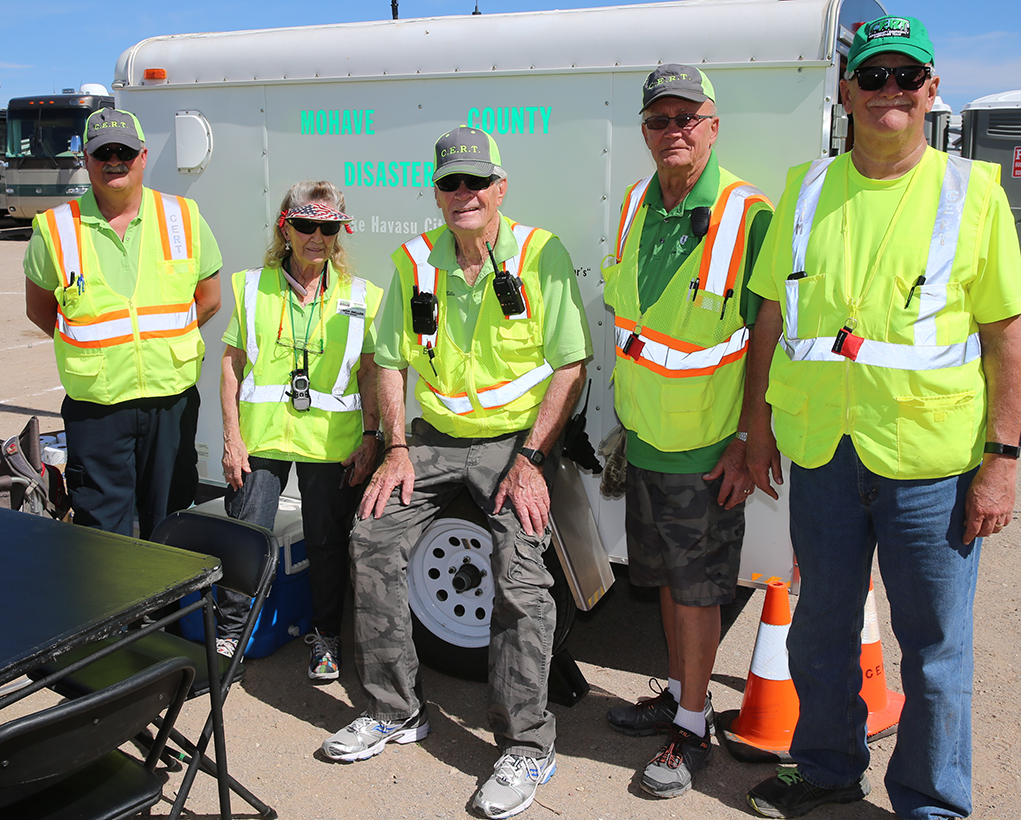
Members of C.E.R.T. pose for a photo while working the Bluegrass Festival in March. Jillian Danielson/RiverScene
For emergency calls, C.E.R.T. automatically is called upon for any multi-agency incident occurring in Havasu during a time when temperatures exceed 100 degrees.
“What it means to the firefighter on the ground is relief from the extreme temps,” said Tyler Zink, Lake Havasu Professional Firefighters president and engineer/paramedic with Lake Havasu City Fire Department.
On June 28, it was an emergency-response call that beckoned C.E.R.T. to Horizon Six, a southside neighborhood in Havasu, during scorching afternoon temps.
“It was 109 degrees that afternoon, it was a Sunday, and we already had firemen waiting for rehab when we arrived,” Mac Millan said. “It was a shed, a truck and a trailer that were on fire.”
For C.E.R.T, the call comes in for aid and a text is sent via smartphone app for all volunteers to respond. First-arriving C.E.R.T. members break out a small ice chest with bottled water and provide cold towels until the Havasu fire department’s rehab truck, which is housed at Fire Station No. 5 on Lake Havasu Avenue, arrives loaded with 30 fresh bottles of breathing air and five big bags of ice among other tricks of the trade.
The full rehab station is set up where C.E.R.T. can best provide shade with either an E-Z Up shade cover, awning, or any nearby building’s shade pattern. Tables and chairs also are quickly arranged for the firefighters who will begin to rotate out of their attack on the fire.
“After a bottle or two of breathing air, to come out to get cool water and sit in the shade is a big deal in recovery,” Zink said about what it’s like when working a large fire. “It’s the simple act of kindness of someone to bring a fresh bottle of breathing air and cold water after you’ve given all you can give for the last 20 or 30 minutes.”
With firefighters on scene for an hour, or two, or longer during larger-scale incidents, every minute is a struggle in Havasu’s summer heat.
“When you’re loaded down in gear and the heat is radiating back into the body and there is no way of cooling, with the most minimal of tasks the heart rate gets elevated,” Zink said. “With the extreme heat on top of the heart rate and physical stress, even the fittest of people find it difficult.”
After using one tank of breathing air, which lasts around 30 to 45 minutes, each of the firefighters take their turn at the rehab station. Each undergo a simple medical evaluation before finding a space to recuperate. Chilled bottles of water and wets towel are provided by the volunteers while more volunteers work to refill the empty air tanks.
More firefighters rotate out of the incident to rehab. Often times the just-rehabbed firefighters gear-up again for yet another round at the front of the line. And, so it continues until the incident has been handled. Typically, C.E.R.T remains on scene a few hours.
DESERT RESCUE
The very next day after the Horizon Six incident, C.E.R.T. rolled out again during a multi-agency response to SARA Park where three hikers were sought by Mohave County Search and Rescue. There is a water, ice, and bucket cooling method C.E.R.T. swears by to rapidly reduce body temperatures of anyone on scene.
“It’s a 5-gallon bucket with ice and water,” Mac Millan said. “We sit the person down and put their hands, palm down, into the water so the water comes up above their wrist and below the elbow. We do this for 15 seconds at a time and that brings their temperature down.”
DOG RESCUE
Be it man or beast, the rescue-effort does not stop for Mac Millan, even when off the volunteer-clock. Following a fatal, late-night boating accident in early June in the area of Site Six on Lake Havasu, Mac Millan, his wife Arlene Mac Millan and daughter Debbie Mac Millan, launched their personal watercrafts at dawn for an early morning, purely recreational lake jaunt.
“I knew there was a dog, with a life jacket on, that was lost,” Mac Millan said. He had learned of the fact via listening to his pager the night before. “I looked up on the side of the hill on the California side and there was a big, orange blob. On closer look, it was an 80-pound pit bull-terrier mix that had swam all the way to the other side of the lake. There were stickers in her feet and she wouldn’t come to us.”
The dog’s life jacket had a handle that helped the Mac Millan family coax the dog to the shore where they worked to remove the thorns from her feet. Arlene and Debbie teamed up to situate the dog on their PWC and shuttled her to safety in Arizona. On arrival, the dog was turned over to local animal welfare officials to be housed at the local humane society. Later, the rescued canine was reunited with her family.
Upon photo request by RiverScene Magazine staff, Mac Millan said he has no picture of the dog because he and his family were just too busy rescuing her.
ACTIVE-SHOOTER TRAINING
Aside from emergency and non-emergency responses, C.E.R.T. also participated as actors at Lake Havasu City High School when they played the victims during an active-shooter training drill for Havasu emergency responders in late 2019. The measure led C.E.R.T. to increase their own first aid supplies to include bleed kits containing a large tourniquet and special dressings used to stop the bleeding as a result of a bullet wound, Mac Millan explained.
KNOX BOX
The city’s Knox Box program also is overseen by C.E.R.T. as of 2012. The program has had volunteers install, maintain, update, remove and refurbish at least 600 Knox Boxes since then. Each box allows emergency responders family contact information and a numeric code to open the box. Inside is a housekey for entry into the participant’s home in case of emergency. The program is largely funded by local clubs originating from the Eagles, Elks Lodge, and Lake Havasu Senior Center.
PANDEMIC
The pandemic and mayhem of COVID-19 has brought changes to C.E.R.T, too. For example, there are no non-emergency first-aid booths being set up because most mass gatherings in Havasu simply have been cancelled or postponed.
In the emergency-response rehab stations, the chairs are placed further apart and all C.E.R.T. volunteers wear masks, hand sanitize, and practice distancing.
The Knox Box program has morphed into a contactless system requiring family contact info and keys to be left on the porch at time of install.
Furthermore, C.E.R.T. was involved in a recent COVID-19 testing blitz that occurred mid-May at Havasu’s Aquatic Center.
“We handled all traffic patterns and positioned the cars at six booths, and we also rehabbed those that worked the booth,” Mac Millan said.
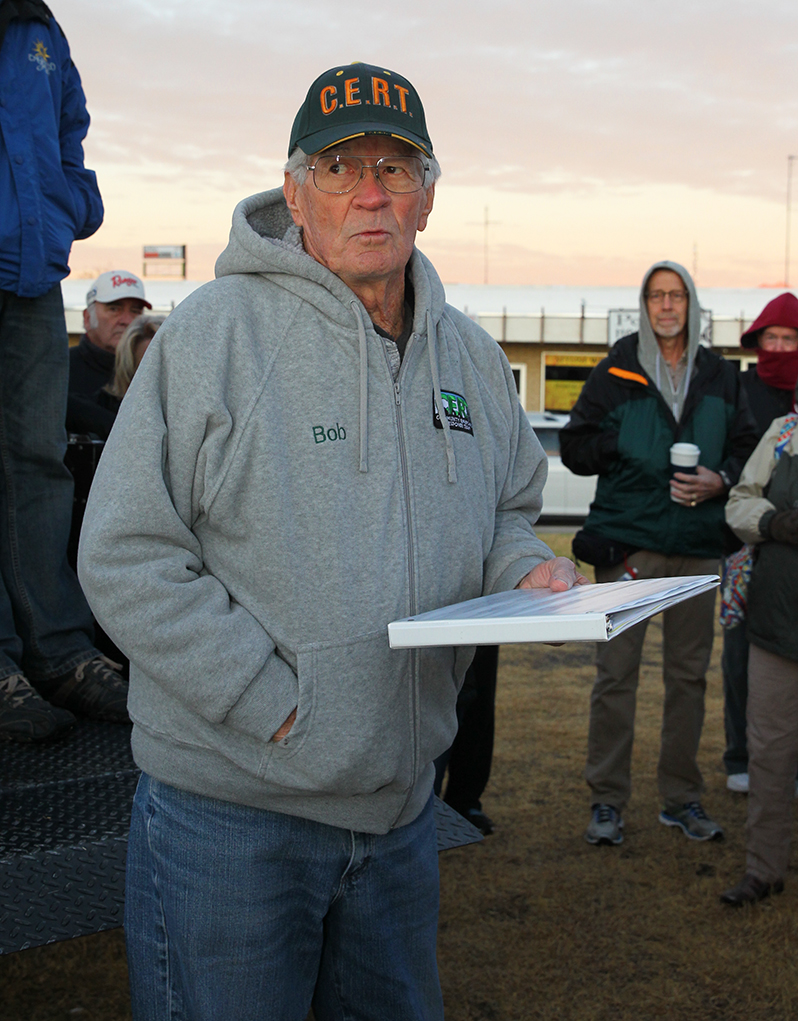
C.E.R.T team member Bob MacMillan speaks with volunteers at a Havasu Balloon Fest crew training about safety. Jillian Danielson/RiverScene

C.E.R.T. volunteers and Jeff Kemp of the Lake Havasu Fire Department are on hand at the Havasu Balloon Festival to help keep balloon pilots, crew, volunteers, and attendees safe during the event. Jillian Danielson/RiverScene









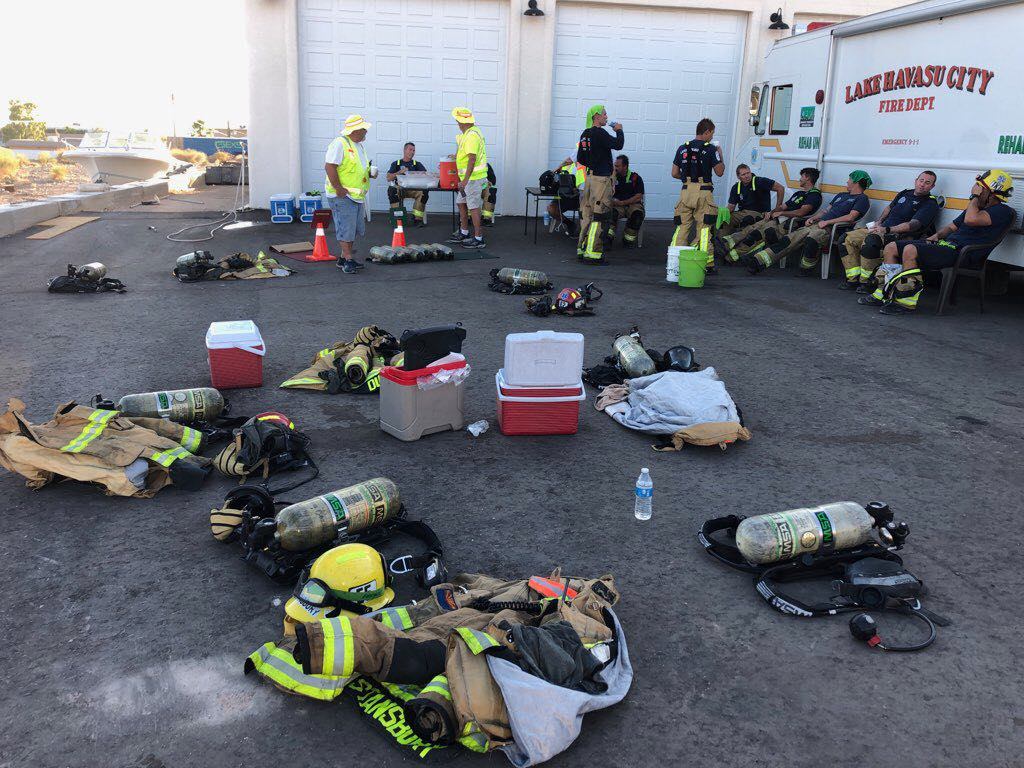




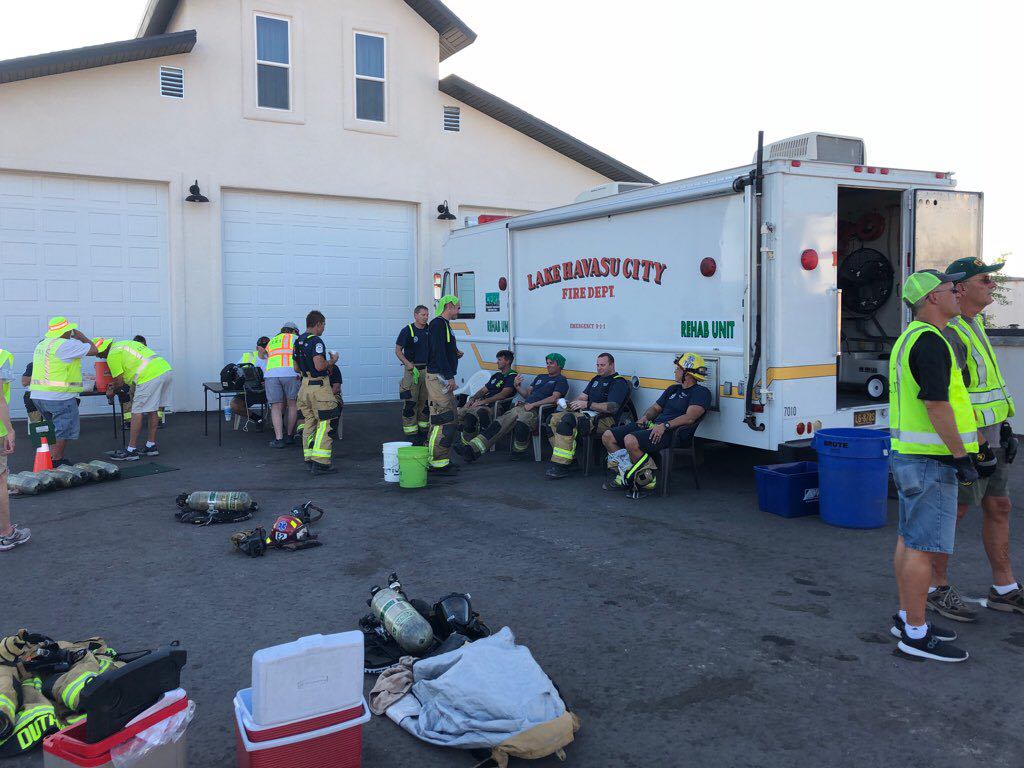
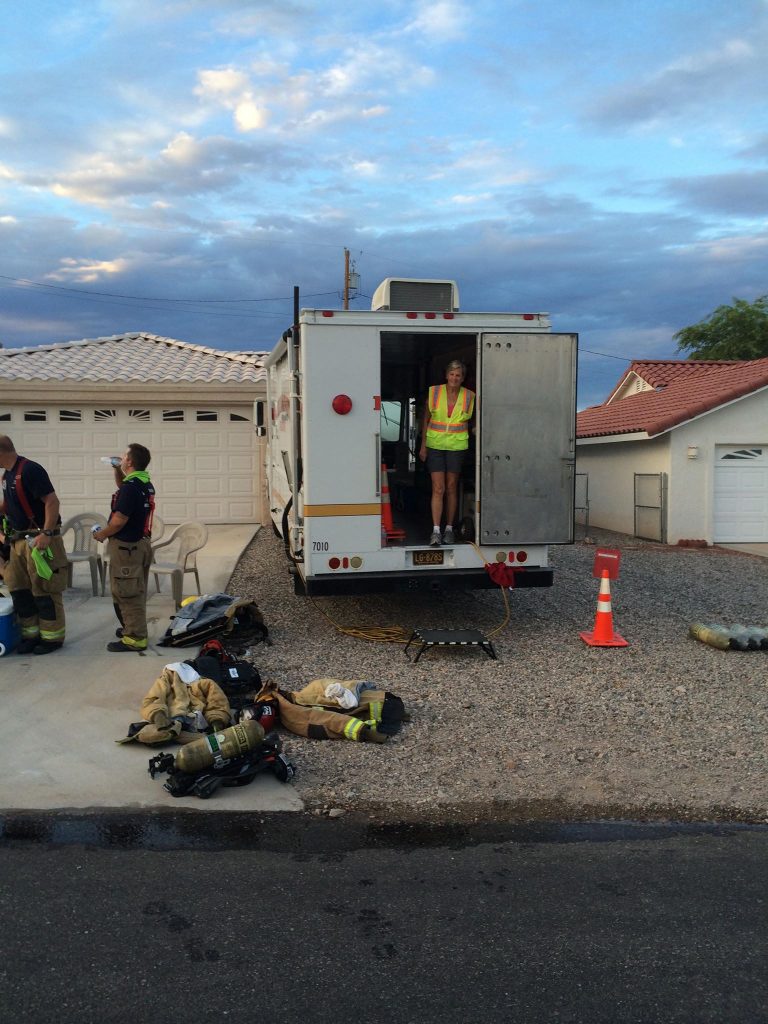
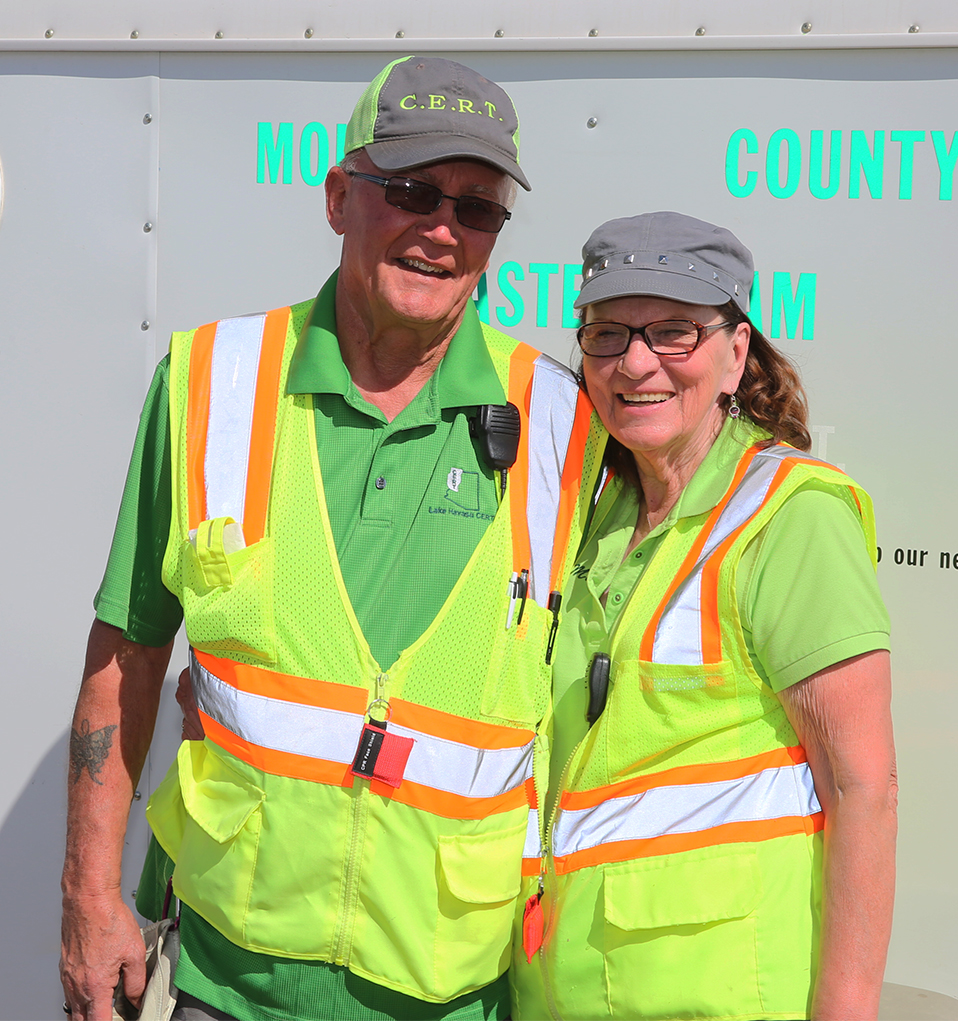
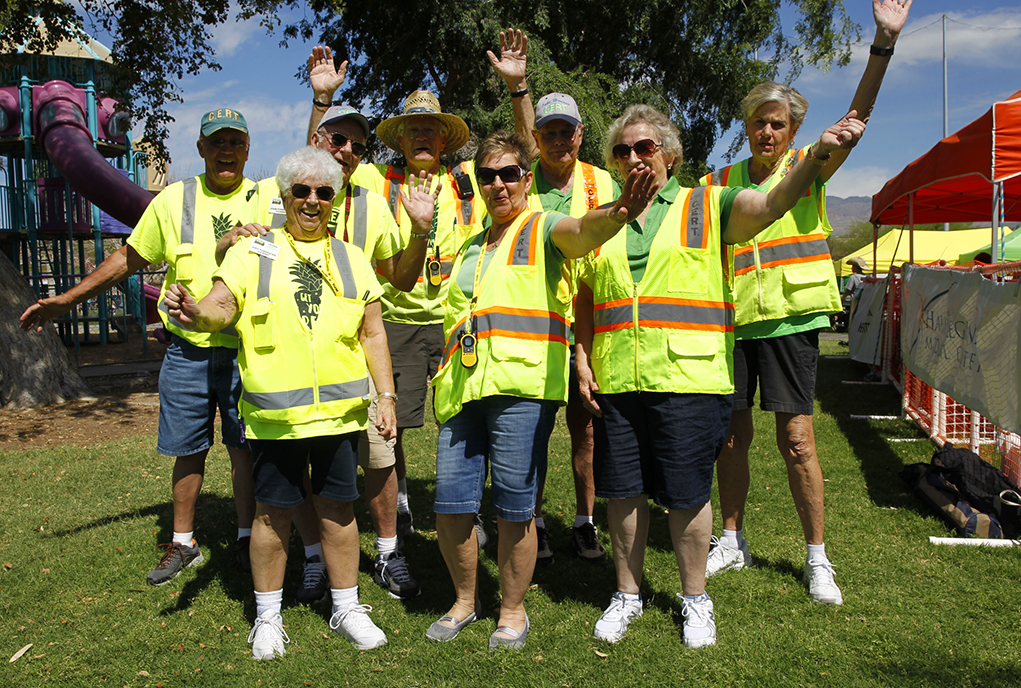



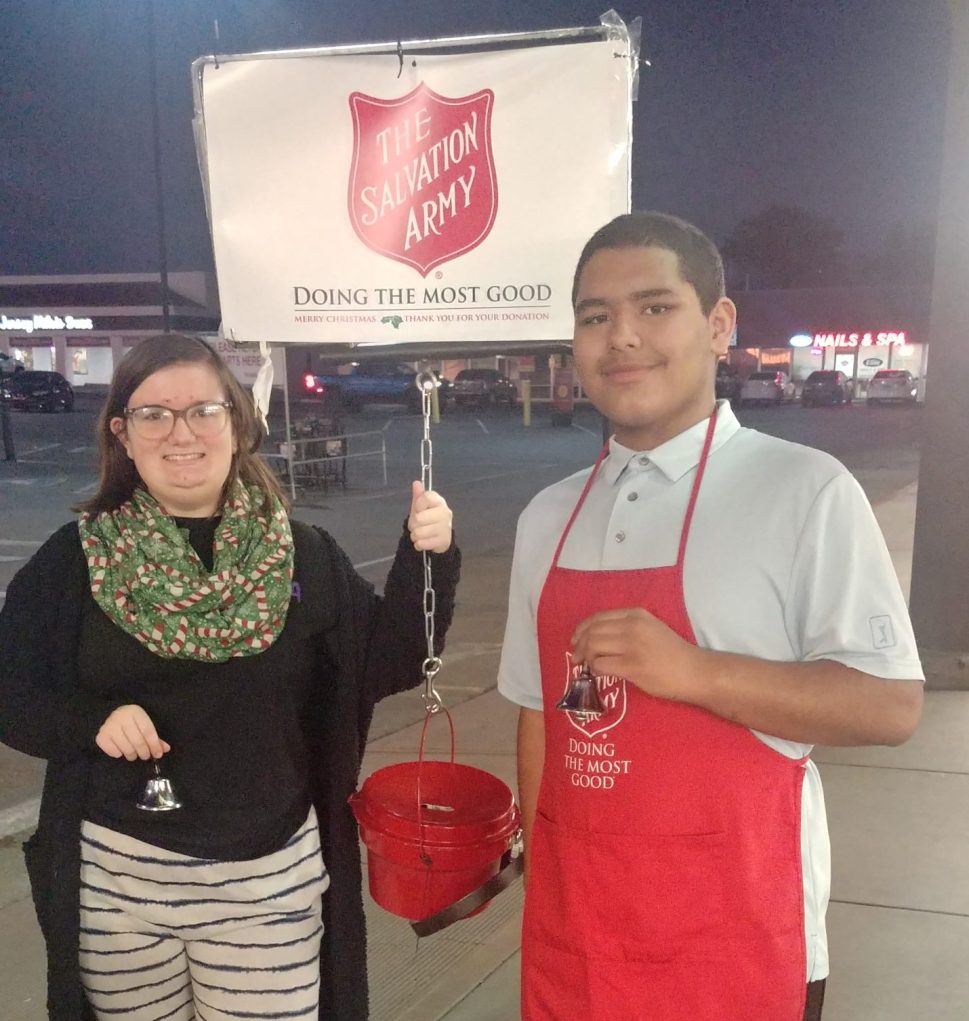
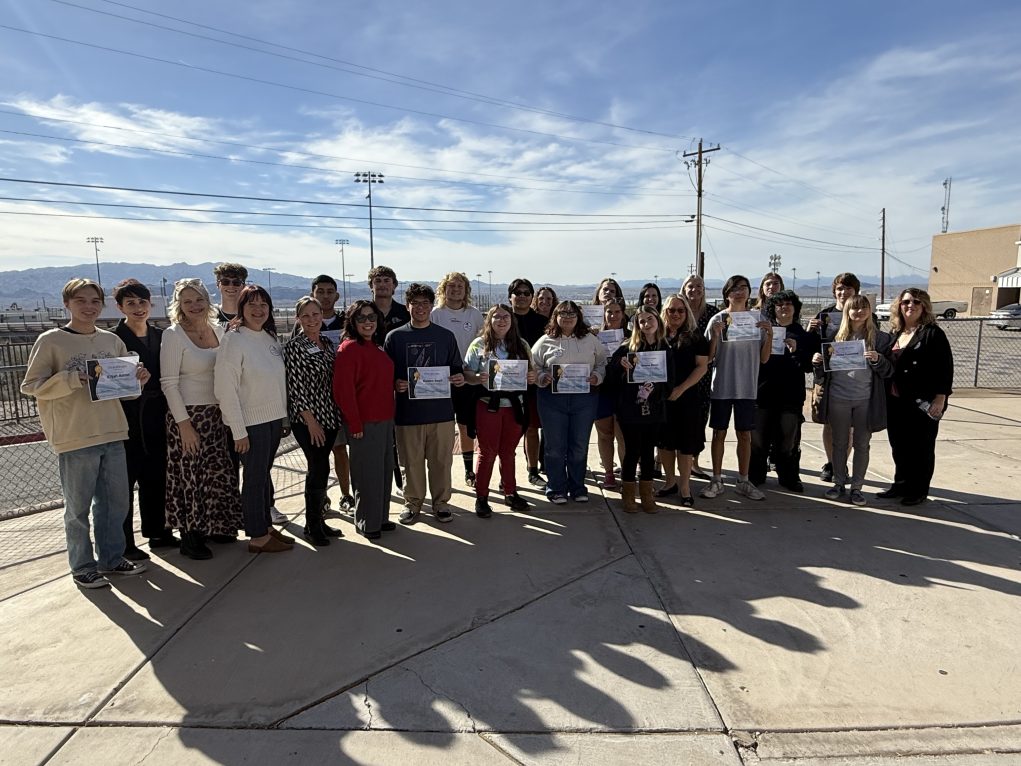

No Comments » Comments: